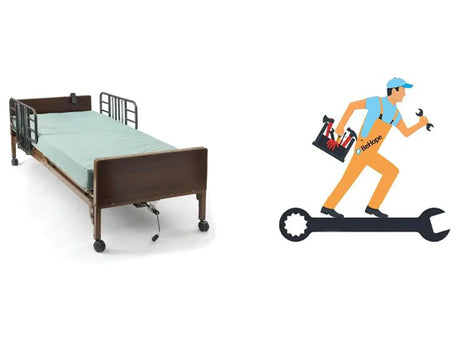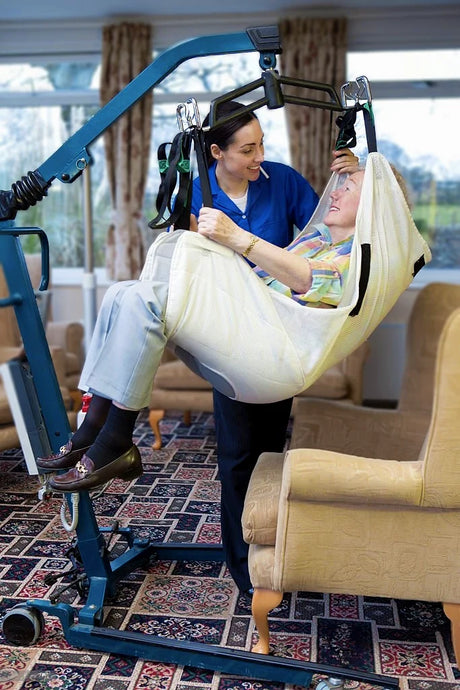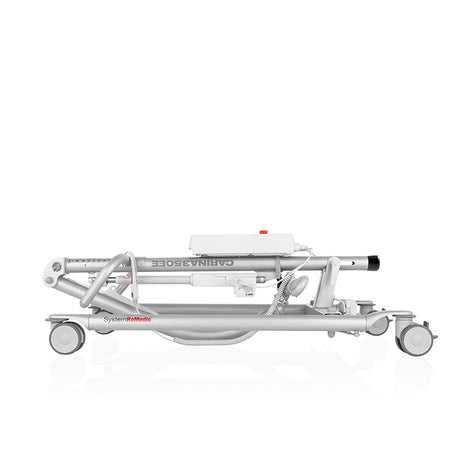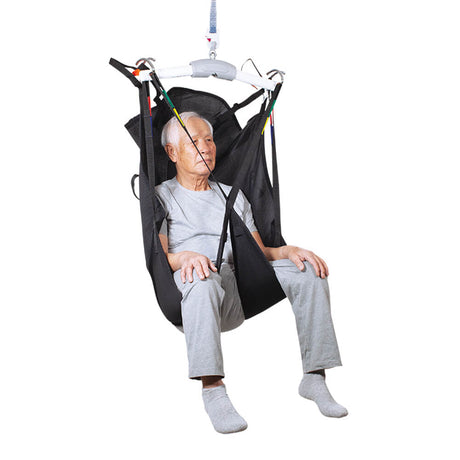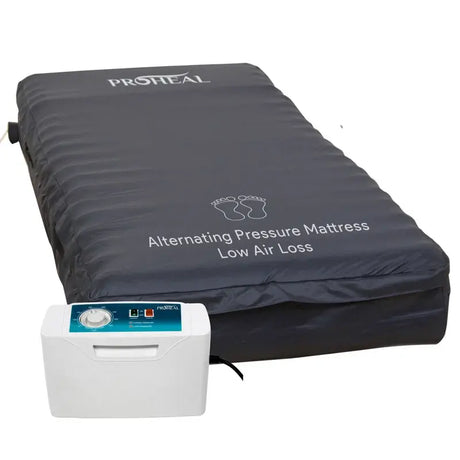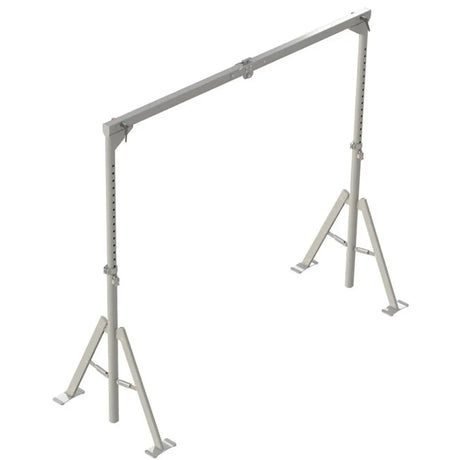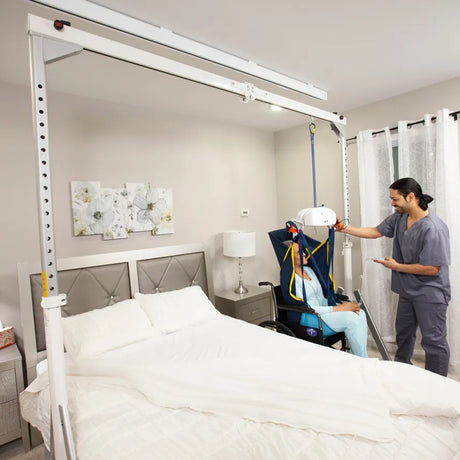Staying active and mobile is crucial for maintaining independence as we age. One fantastic tool that many elderly individuals rely on is the Drive rollator walker. These devices provide stability and support, making it easier to move around safely. However, like any mobility aid, they need proper maintenance to function effectively. One critical aspect is ensuring the brakes are adjusted correctly. In this blog, we'll guide you through the simple steps to adjust the brakes on your Drive rollator walker, helping you move around with confidence and ease.
Understanding Rollator Walker Brakes
Rollator walkers have a brake system similar to bicycles. The brakes are designed to keep the walker stationary when you're sitting or standing, preventing any unwanted movement. Ensuring that these brakes are always in top working condition is essential for your safety.
The key components of the rollator brake system include the brake handles, cables, and the brake pads. When you squeeze the brake handles, the cables pull the brake pads against the wheels, stopping the walker. Over time, these components may require adjustments to maintain their effectiveness.
Why Brake Adjustment Matters
Properly adjusted brakes are crucial for preventing accidents and ensuring your safety. If your brakes are too loose, the walker may not stay in place when you want it to. On the other hand, if they're too tight, it could be challenging to move the walker.
Regularly checking and adjusting the brakes on your Drive rollator walker will help ensure that it works efficiently. This simple maintenance task can significantly impact your overall mobility and safety.
Tools You'll Need
Before you start adjusting your rollator walker brakes, gather the necessary tools. You'll need a screwdriver, adjustable wrench, and a pair of pliers. Having these tools on hand will make the process smoother and more efficient.
Ensure that you also have a clean, flat surface to work on. This will make it easier to maneuver the walker and access all the necessary components.
Step-by-Step Guide to Adjusting Your Rollator Walker Brakes
Step 1 Check Brake Handles
Start by examining the brake handles to ensure they're functioning correctly. Squeeze the handles and observe how the brake pads engage with the wheels. If you notice any looseness or if the brakes don't engage fully, it's time to adjust them.
To check the brake handles, position yourself comfortably so that you can reach both handles easily. Squeeze and release both handles several times to assess their responsiveness.
Step 2 Examine Brake Cables
Next, inspect the brake cables for any signs of wear or damage. Ensure that the cables are properly connected to the brake handles and the brake pads. If you notice any fraying or kinks, it's best to replace the cables before making adjustments.
Gently pull on the cables to check for tension. If the cables feel loose, you'll need to tighten them to ensure proper brake function.
Step 3 Adjust Brake Tension
To adjust the brake tension, locate the adjustment screws on the brake handles. These screws control the tension in the brake cables. Use a screwdriver to turn the screws clockwise to tighten the brakes or counterclockwise to loosen them.
Make small adjustments and test the brakes after each turn to ensure you achieve the desired tension. Avoid over-tightening, as this can make it difficult to move the walker.
Step 4 Test Brake Engagement
After adjusting the brake tension, test the brake engagement by squeezing the handles and observing how the brake pads interact with the wheels. The brakes should engage smoothly and hold the walker firmly in place.
Repeat this process for both brake handles to ensure even and effective braking on both sides of the walker.
Step 5 Fine-Tune Brake Pads
If the brakes still don't engage properly after adjusting the tension, you may need to fine-tune the brake pads. Locate the brake pad adjustment screws near the wheels. Use a wrench to turn these screws and adjust the position of the brake pads.
Ensure that the brake pads make full contact with the wheels when the handles are squeezed. Properly aligned brake pads will improve the overall effectiveness of the braking system.
Step 6 Secure Brake Cables
Once you're satisfied with the brake adjustments, secure the brake cables in place using pliers. Tighten any loose cable connections and ensure that the cables are properly routed along the frame of the walker.
Avoid leaving any slack in the cables, as this can affect the brake performance. Properly secured cables will ensure consistent and reliable braking.
Common Brake Issues and Solutions
Worn Brake Pads
Over time, brake pads can wear down and lose their effectiveness. If you notice that the brake pads are thin or unevenly worn, it's time to replace them. Contact the manufacturer for replacement parts or visit their website for information.
Replacing brake pads is a straightforward process. Follow the manufacturer's instructions and ensure the new pads are properly aligned for optimal performance.

Loose Brake Cables
Loose brake cables can lead to ineffective braking. If you find that your brake cables are loose even after adjusting the tension, check the cable connections. Tighten any loose connections to ensure proper cable tension.
Regularly inspect the cables for signs of wear and tear. Replace any damaged cables to maintain the integrity of the braking system.
Misaligned Brake Components
Misaligned brake components can cause uneven braking and affect the overall performance of your walker. If you notice that the brakes are not engaging evenly, check the alignment of the brake pads and cables.
Make necessary adjustments to ensure that all components are properly aligned. Proper alignment will enhance the effectiveness of the braking system.
Benefits of Regular Maintenance
Regular maintenance of your Drive rollator walker, including brake adjustments, offers several benefits. It ensures your walker remains safe and functional, providing you with the support you need for daily activities.
By taking a few minutes to check and adjust the brakes regularly, you can extend the lifespan of your walker and enjoy enhanced mobility and independence.
When to Seek Professional Help
While adjusting the brakes on your rollator walker is a task you can handle at home, there may be instances where you need professional assistance. If you encounter complex issues or feel unsure about the adjustments, don't hesitate to seek help from a qualified technician.
Professional servicing ensures that your walker remains in top condition and provides you with peace of mind.
FAQs About Adjusting Rollator Walker Brakes
How often should I check my rollator walker brakes?
It's recommended to check your rollator walker brakes at least once a month. Regular inspections will help identify any issues and ensure that your walker remains safe and functional.
Can I use any type of brake pad for my rollator walker?
No, it's essential to use brake pads specifically designed for your rollator walker model. Using the correct brake pads ensures optimal performance and safety.
What should I do if my brake cables are frayed?
If you notice frayed or damaged brake cables, it's best to replace them immediately. Frayed cables can compromise the effectiveness of the braking system and pose a safety risk.
Conclusion
Maintaining your Drive rollator walker is essential for ensuring your safety and mobility. By following these simple steps to adjust the brakes, you can enjoy the freedom and independence that come with a properly functioning walker.



